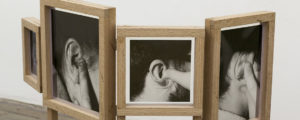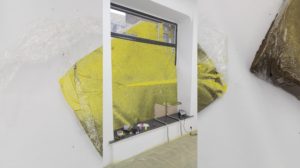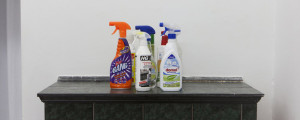Across the river from the National Library of Latvia –a curious multi-storey building constructed at the birth of the Republic in 1919 –stands kim? Contemporary Art Centre. It’s a two-storey brick warehouse in the once degenerate, now regenerated Maskavas forštate (Moscow District) near the massive hangars of the abundant Riga Central Market. It’s showing a group exhibition, Exit, Stuttering and Nebula, running December 6, 2015, to January 24, 2016, which will be its last in that location. The issue in the Baltic city is the same as seemingly anywhere; where once poor neighbourhoods become desirable for developers and the previous tenants are compelled to move on. For anyone who travels, “it’s not the same” has almost become a global art community cliché and Riga is no exception. There are countless reasons for why this is happening –with capitalism being a big one –but it’s worth considering it in terms of an expansion of the kim? gallery question-mark “kas ir māksla?” (“What is art?”). Or perhaps more expressly: “who’s at fault?”. Because a place like kim? presents a rather interesting paradox.
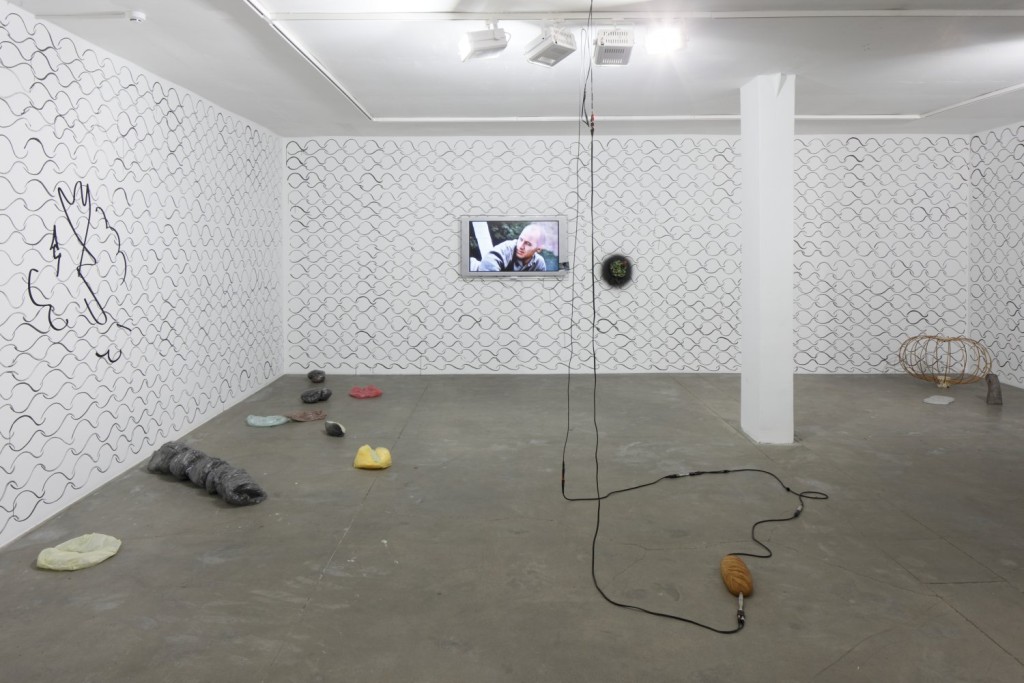
As an outlier, in terms of the still regionally-focussed art scene in Riga, the impressive programming of the gallery, which at this moment includes the aforementioned group exhibition showing international artists like Sweden’s Henning Lundkvist, Helsinki-based Mikko Kuorinki and Īrisa Erbse working in Cologne, along with one Riga-based local Inga Ģibiete. Upstairs, an exhibition by Bolivian-American artist Donna Huanca appears in one room, Brooklyn-based Ethiopian Ezra Wube‘s Palindromes is in another. The latter solo exhibition’s name is the term for a word, line, verse, number, sentence that reads the same backward as it does forward and aptly embodies what the press release calls the “dialogical tension” between not only “the ‘here’ and ‘there'” in this particular show but that of the Exit, Stuttering and Nebula group exhibition and Huanca’s solo one.
“Synthetic fiber see-thru leaves” says the room sheet for the New York-based artist’s Polystyrene’s Braces. They’re lyrics lifted from post-punk exhibition namesake Poly Styrene’s song ‘The day the world turned day-glo’, released with X-Ray Spex in 1978. It’s a text that runs through its persona’s interactions with a noxious synthetic landscape filled with ‘fairy snow’, ‘nylon curtains’, ‘polypropylene’ and ‘rayon trees’ –domestic, and by extension feminine materials the British vocalist reclaims by dominating their ‘acrylic road[s]’. Huanca in turn presents leather and faux fur ‘Hairy Boots’ (2015), and nylon and leather ‘Dino Shoes’ (2015), next to the clay smudges and paint footprints made by the actual bodies of two nude women performers from opening night. It’s an equally fetishistic display of an object-body gender assignation of cultural norms that the work opposes, at the same time as it acknowledges and thus reinforces it by its very existence.
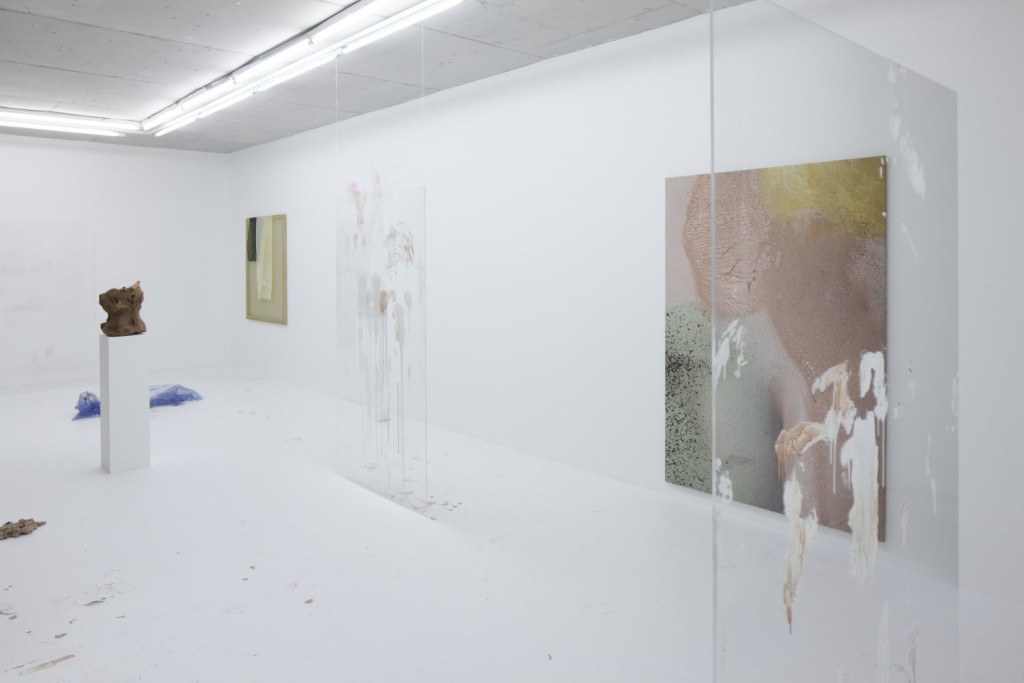
“We haven’t touched any of your things” says Eoghan Ryan‘s ‘Are you trying to make me say the word?’ (2015) video in Exit, Stuttering and Nebula downstairs. Here, a certain subjectivity fragments into a montage of images of film footage, dead flies and sound bytes of the artist speaking to his parents on Skype. The flatscreen it plays from hangs across from Frank Boyd’s ‘Untitled’ (2013) at the centre of the exhibition –a loaf of locally-sourced rye bread that’s hooked up to XLR cables hung from the ceiling –and Vivienne Griffin‘s white hanging blinds with holes cut through them as a view to nothing in ‘All the questions become riddles as soon as reflection upon them becomes serious’ (2015). Curator Kaspars Groshevs‘ own contribution comes in a black painted simulation of the weave of a wicker basket painted on the walls, engulfing all the works and drawing them –physically, culturally, thematically –together.
Groshevs has another show on at the artist-run 427 (Four To Seven) space on Stabu Road, simultaneously. It also features an exhibition called FERMENTATION by Īrisa Erbse from the group exhibition, but here her canvases of paint dispersed by cleaning products are brighter and more colourful. The brief room sheet expands on her enthusiasm for writing “poetry and brewing recipes” –as described in the one for Exit, Stuttering and Nebula –with a list of artisanal beer brands while the household products she used are proudly displayed on top of the remnant of an inbuilt fireplace. Their packaging features recognisable multi-national brands amended for a Latvian consumer, while an English-speaker struggles to understand each product’s function. **
Exhibition photos, top right.
